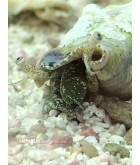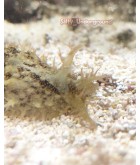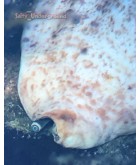Jump to:
- Zoanthid Eating Nudibranchs
- Fresh Water Dip
- Sea Spiders
- Sundial Snails
- Zoa Pox
- Quarantine Method
- Quick Dip
- References
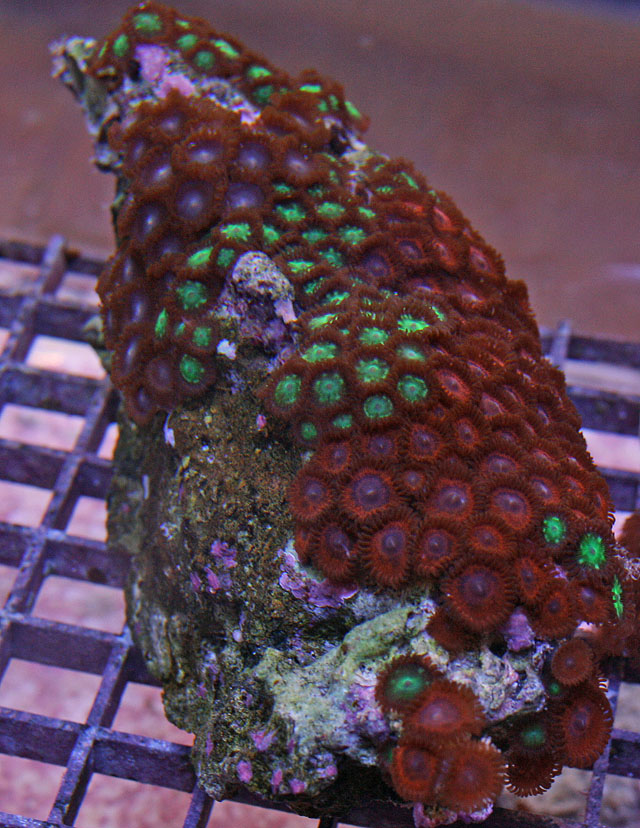
Zoanthids, sometimes called zoas, are popular, hardy corals. They will occasionally suffer from a pest or disease that may be introduced with them or by new tank inhabitants. A few of the more common pests you may encounter include zoanthid eating nudibranchs, sea spiders, and sundial snails. Zoa pox is also a common affliction among zoanthids.
Before working with your zoanthids, you should take precautions. Beware of palytoxin, the toxin produced by zoanthids. The toxin can enter breaks in the skin, like through pores, eyes, mouth, or minor scrapes and cuts. In mild doses, the affected area may be numbed. In large enough doses, you may require emergency medical treatment. Despite this, the hazards can be easily avoided with proper protective gear and common sense. Keep the zoas, associated water, hands and instruments away from your eyes, mouth, and pores, sterilize your equipment properly after handling, and wash your hands afterwards.
Zoanthid Eating Nudibranchs
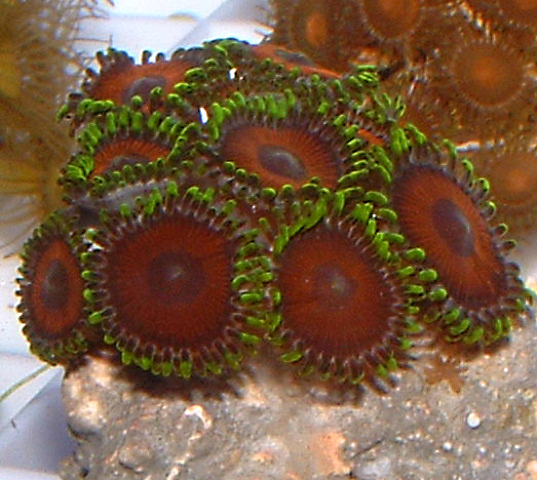
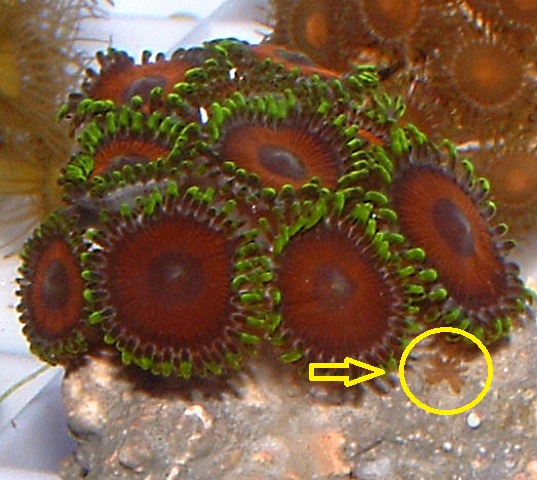
Zoanthid or zoa eating nudibranchs are pests, and should not be allowed into your aquarium. These nudibranchs are aeolid gastropod mollusks (sea slugs). Zoa eating nudibranchs take on the color of the zoanthids they are eating, so they are difficult to spot. Nudibranchs are hermaphrodites, but not asexual. This means that if there are at least two in your system, chances are that they have successfully bred in your aquarium.
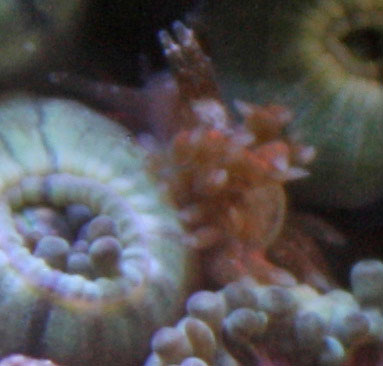
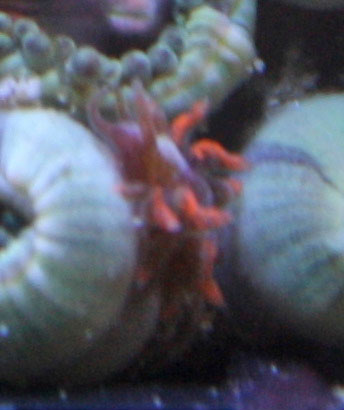
Zoa eating nudibranchs can be removed by hand with a pair of tweezers. Other aquarists also use CoralRX to treat the coral in quarantine to ensure they are eliminated. As with any treatment, it is recommended you thoroughly research the method and follow any manufacturer instructions. As nudibranchs commonly hide in the zoa mat, we use a pipette to ensure the dip has been washed between the polyps and on the bottoms of frags. Zoanthid eating nudibranchs also lay eggs in a spiral pattern, which can be removed by hand. It is necessary to continually check your corals for more nudis and egg strands for some weeks to ensure the complete removal of the pests.
As related on the manufacturer's website, here is the recommended quarantine treatment for zoanthids using Coral Rx:
Creating the dip:
Dosage per gallon of dip
- Coral Rx: 20ml or 4 capfuls
- Coral Rx Pro: 30 drops
- Coral Rx Industrial: 10 drops
Shake bottle of Coral Rx. Add dosage as stated above based on product purchased to 1 gallon (3.8 liters) of saltwater from aquarium. Mix well. Using a small power head, keep the water moving and place coral in the coral dip. If you do not have a power head, gently shake coral in the coral dip. While the coral is in CoralRx take a turkey baster, and blast the coral with the dip. Making sure it is getting in between the polyps and the underside of the coral. Do this for approximately 5 - 10 minutes. Keep coral in the coral dip for 5 – 10 minutes. After 5 – 10 minutes, remove coral and discard the coral dip. Do not reuse the coral dip as parasite may release toxins. Rinse coral with clean saltwater and return to aquarium. Do not add Coral Rx directly into aquarium.
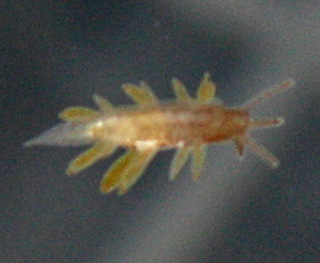
Fresh Water Dip
You may also use a fresh water dip to kill zoanthid eating nudibranchs that have hatched beyond the egg stage. This treatment may not be successful on eggs strands. Simply dip the affected zoas in RO/DI water for approx. 5 minutes. Use a pipette or turkey baster to baste the coral several times in the 5 minute period. DO NOT freshwater dip any other type of coral or other saltwater animal. This will most likely lead to their death. Be aware that a 5 minute freshwater dip may kill pods and other life on a live rock. Do not freshwater dip the zoas more than once a week.
Sea Spiders
Sea Spiders are not spiders in the traditional sense. They are not members of the arachnid family, but are, instead, marine arthropods known as pycnogonids. There are more than 1300 known species, and almost all of them are carnivores. Depending upon the species, they will feast on your corals, anemones, sponge, etc.
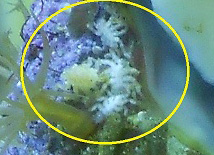
Sea spiders are common predators on zoanthid corals. They may be hard to spot, some being as small as 0.04 inches in diameter. They will even crawl inside a closed polyp, making it very difficult to spot. Some commercial treatments claim to remove pycnogonids, but the hobbyists on the forums have not found this to be the case. The spiders tend to stay beneath the mucus layer of the zoas, and remain unaffected by treatments. The best method discovered so far is to physically remove the adults with some tweezers. Keep checking the coral for months afterwards to catch any that hatched over time. Visit this article from Dr. Ron Shimek to learn more about sea spiders and pycnogonids.
Sundial Snails
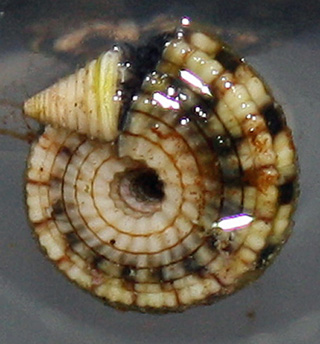
Sundial snails may appear to be harmless snails, but they are predators. There are more than 1500 species of sundial snails, 140 extant species. Unlike other sea snails you may be familiar with, these have the appearance of a flat spiral, called discoidal in the scientific community. They are found in all parts of the ocean, from the intertidal zones to the great abyss. They also occupy the different climate zones of the ocean, from the temperate waters off of the coast of Ireland to the tropical waters of the equator.
Unfortunately for hobbyists, sundial snails like to eat zoanthids. Look over your new purchase before introducing it to your tank. Remove any snails that have hitchhiked before placing it in your aquarium. You will need to check your corals periodically, as the sundial snails can spend a long time in their free swimming larval stage.
Zoa Pox
Zoa Pox, zoanthid pox, zoopox, and zoapox are all names for a disease of zoanthids that eventually lead to their recession and death if not treated. One of the symptoms of zoa pox is yellowish white “pimples” on the stalks of zoanthids. Soon, the polyps close, and the coral will die off. This can wipe out just one colony or even spread to other zoa colonies. There is no definitive cause for zoa pox. Many of the treatments of the symptoms are based on hobbyists' theories. Until further research is performed, any treatments of zoa pox cannot be guaranteed. Listed below is the commonly accepted treatment.
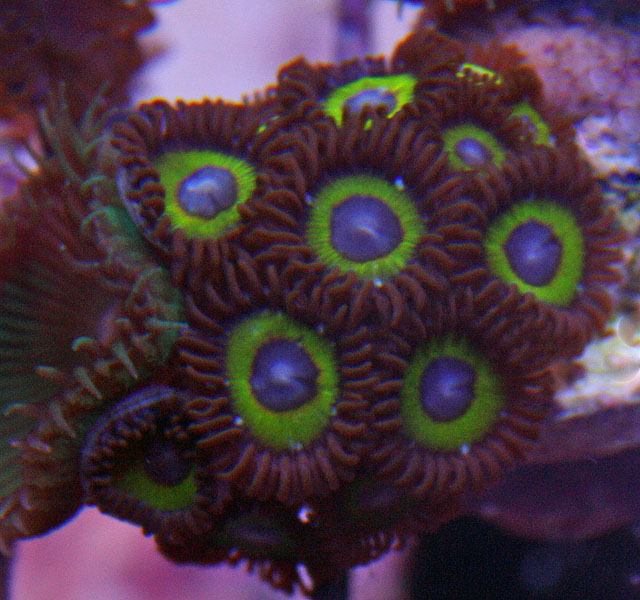
As related on the Reef Central forums, one treatment for zoa pox is using a freshwater fish medicine called Furan-2. You can treat in a quarantine tank or alternatively in a “quick dip” method. The directions below are for use with the Furan-2 powder packets. The active ingredients in each packet are 60 mg of Nitrofurazone and 25 mg Furazolidone. As with any treatment, it is recommended you thoroughly research the method and follow any manufacturer instructions.
Quarantine Method (as recommended by the manufacturer):
- Set up a 10 gallon quarantine tank with heater, lighting, and powerhead. Use existing saltwater from your main aquarium. This quarantine will last at least 4 days.
- Add the affected corals.
- Empty one packet of Furan-2 into the quarantine tank. (1st dose)
- Wait 24 hours.
- Empty another packet of Furan-2 into the quarantine tank. (2nd dose)
- Wait 24 hours, and then perform a 25% water change.
- Empty one packet of Furan-2 into the quarantine tank. (3rd dose)
- Wait 24 hours.
- Empty another packet of Furan-2 into the quarantine tank. (4th dose)
- Wait 24 hours, and then perform a 25% water change.
- You may either repeat the full course of treatment or rinse the affected corals with fresh saltwater from your main tank and replace into your aquarium.
Quick Dip:
- Prepare 1 cup (8 oz) of fresh saltwater with salinity the same as your aquarium water. Also set aside a cup (8 oz) of aquarium water to be set aside and used later.
- Dissolve 1 packet of Furan-2 into the cup of fresh saltwater, mix well.
- Place affected zoanthid coral into the Furan-2/fresh saltwater mixture and leave for approximately 15-20 minutes, then remove.
- Rinse the coral in the prepared cup of aquarium water, and then replace coral in your main aquarium.
- Wait 24 hours and then repeat steps 1-4.
- Wait 24 hours and then repeat steps 1-4 again.
- Wait 1 week.
- Repeat above process, but reduce the time in the Furan-2/fresh saltwater mix to 10 minutes.
References
Bieler R. & Petit R. E. (2005). "Catalogue of Recent and fossil taxa of the family Architectonicidae Gray, 1850 (Mollusca: Gastropoda)". Zootaxa 1101: 1–119. Retrieved on February 17, 2012, from http://www.mapress.com/zootaxa/2005f/zt01101p119.pdf
CoralPedia. (2012). ZoaPox (Zoa Pox); the search for the cause and cure. Retrieved on February 13, 2012, from http://www.zoaid.com/articles004.php
Reef Central. (2012). Sea Spider. Retrieved on February 15, 2012, from http://www.reefcentral.com/forums/showthread.php?s=&postid=3818011#post3818011
Reef Central. (2012). Help with Zoa Pox and Furan-2 Please? Retrieved on February 17, 2012, from http://www.reefcentral.com/forums/showthread.php?t=1816132
Shimek, R.L. (2012). Along Came a Spider. Retrieved on February 15, 2012, from http://reefkeeping.com/issues/2003-01/rs/index.php
Wikipedia. (2012). Architectonicidae. Retrieved on February 17, 2012, from http://en.wikipedia.org/wiki/Architectonicidae
Wikipedia. (2012). Sea Spiders. Retrieved on February 15, 2012, from http://en.wikipedia.org/wiki/Sea_spiders


